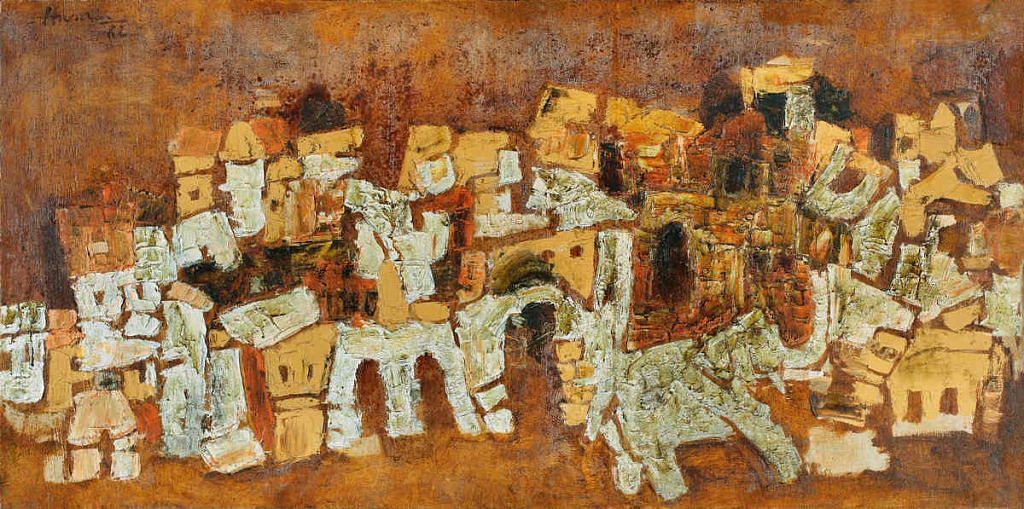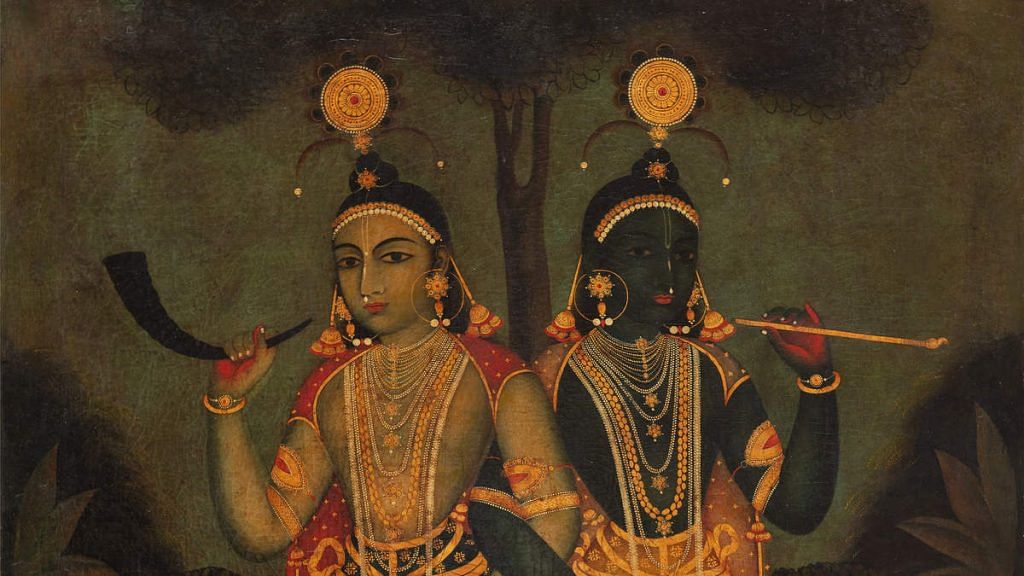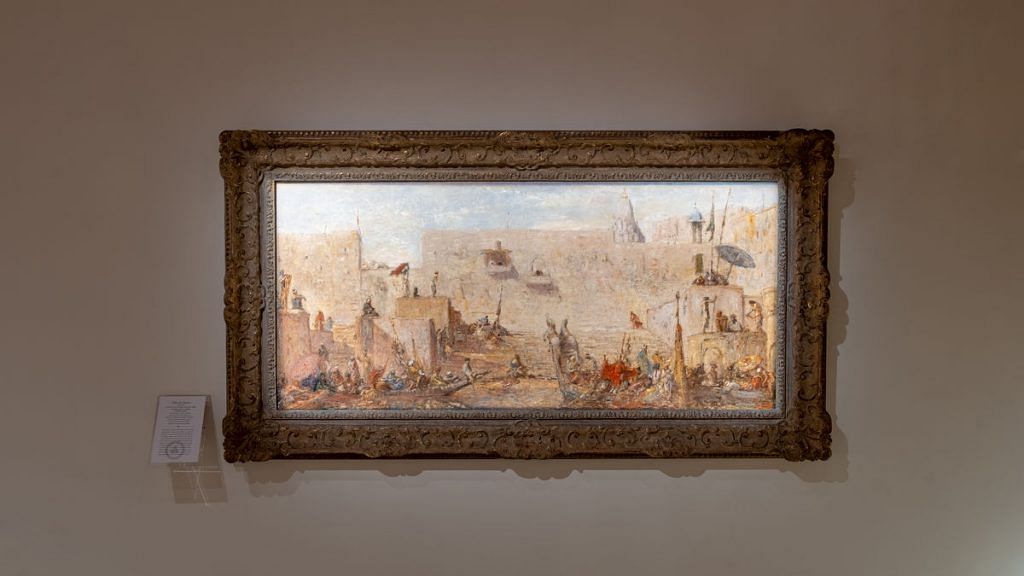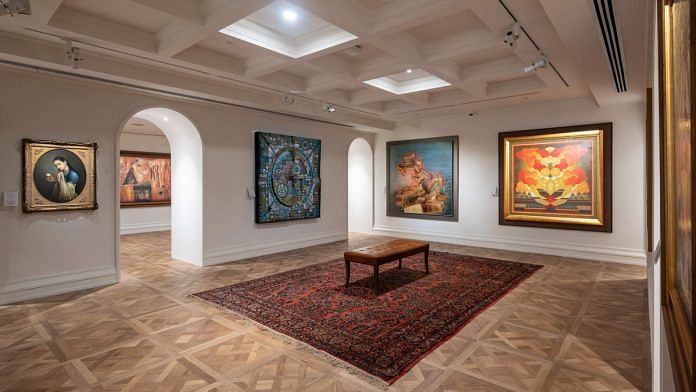Mumbai: Not every artwork is strictly ‘Indian’ or even iconic in the traditional sense of the word, but that’s kind of the point of a new exhibition, on until 30 May, by art company DAG, formerly Delhi Arts Gallery.
Titled ‘Iconic Masterpieces of Indian Modern Art’, the ambitious exhibition was especially curated to mark the opening of DAG’s twin Mumbai galleries at the Taj Mahal Palace in Colaba last month, bringing together 50 works of art spanning 200 years and an array of artists, known and unknown, you wouldn’t normally see under one roof.
The classically proportioned 19th-century Coquette by the studio of Raja Ravi Varma is just steps away from the elongated and wrinkled Elephant Man, a rare bronze sculpture by Jogen Chowdhury, created in 2021.

There are famous names like M.F. Husain and Satish Gujral, but also an untitled ornate painting of Krishna and Balarama by an anonymous artist from Bengal, and works commissioned by the East India Company. Foreign artists make their presence felt too, from Arrival of the Prince, Amber, by the 19th-century Orientalist Edward Weeks to the 1912 Festival on the Ganges, Benares by Dutch painter Marius Bauer.
There is, however, a method to the madness.
Carol Goyal, art advisor for DAG, says that what unites the works in this eclectic exhibition is their “exceptional” quality, whether that is through their historicity or their rarity in an artist’s canon.
For instance, here you will not see horses or goddesses by M.F. Husain, but his Udaipur, a heavy impasto landscape he painted in 1962.
There are other surprises, too.
Also Read: Abanindranath Tagore, harbinger of Bengal’s renaissance who remained Swadeshi by brush
Studio Raja Ravi Varma, a ‘subaltern’ artist, neo-tantra from Kashmir
The 19th-century artist Raja Ravi Varma, who was related to the Travancore royal family, is widely celebrated as one of the greatest painters in the history of Indian art, combining classical European aesthetics with intensely Indian sensibilities and iconography.
His depictions of Hindu deities and scenes from Indian epic poetry and the Puranas received such acclaim and were in so much demand that he had to run a studio with other artists to complete the works he began. The Coquette, on display at the DAG gallery, is one such studio offering.
On the other end of the spectrum, so to speak, is Ambadas Kobragade, who, according to his profile on the DAG website, was “close to Mahatma Gandhi’s extended family” and was shaped by his “subaltern origins, frugal living, Gandhian values, and high ideals”.
According to Fardeen Kamal, art advisor at DAG, Dalit artists likely faced obstacles in showing their art in India. Ambadas, who was a pioneer of non-representational art, was part of an Indian art collective in the 1960s but they held only one exhibition. He later moved to Norway and his art became popular among collectors in Europe.
Ambadas fits perfectly into DAG’s idea of putting the spotlight on artists whose “contribution to Indian art-making has been significant but who have fallen off the grid, or not remained as popular,” says the exhibition’s curatorial director Kishore Singh, senior VP, Exhibitions and Publications, DAG.

Another trailblazer who got somewhat lost in the mists of time was Gulam Rasool Santosh. He was one of the most important artists of the neo-tantra movement of the 1960s, along with masters like Biren De and Sohan Qadri.
Santosh was primarily a self-taught artist from Kashmir who started out with landscape paintings but moved towards abstract tantric imagery after a “mystical experience” in the Amarnath cave.
According to Kamal, Santosh was also a man who, in keeping with the tenets of tantra, believed in equality and “challenged patriarchy in all ways he could”. He demonstrated this when he took the name of his Kashmiri Pandit wife, Santosh.
Also Read: Not all women made it to Mughal portraits, but a royal advisor and owner of a library did
The outsiders
A significant part of the exhibition is dedicated to how India was imagined and depicted by European artists, and also to masterpieces by foreigners who made India their home, like Nicholas Roerich who spent his last years in Himachal Pradesh.
One of the most fascinating pieces in the exhibition is a meticulously detailed wall-to-wall watercolour on cloth of the Agra Fort, created by an anonymous artist commissioned by the East India Company.
Company paintings such as this one fulfilled the function that travel photographs do today: they provided a glimpse of India to the British back home.

Then there are paintings by Orientalists who travelled to India to capture it on canvas. One outstanding example is Dutch painter Marius Bauer and his 1912 oil painting Festival on the Ganges, Benares, which depicts the city not just as a site of spirituality but also commerce.
While some artists travelled to India and left, others made it their home, like Nicholas Roerich. The artist is arguably best known for bringing the influences of Russian symbolism to his Himalayan landscapes, but DAG has chosen to showcase Banner of Peace (although it was not on display at the time ThePrint visited the gallery).
The painting, which was made while Roerich was in India, has assumed fresh significance with the ongoing Russia-Ukraine conflict. In the 1930s, the artist drafted an international treaty called the Roerich Pact, signed by several countries including the United States, to restore and promote cultural values. The banner of peace symbolised this ethos.
(Edited by Asavari Singh)



